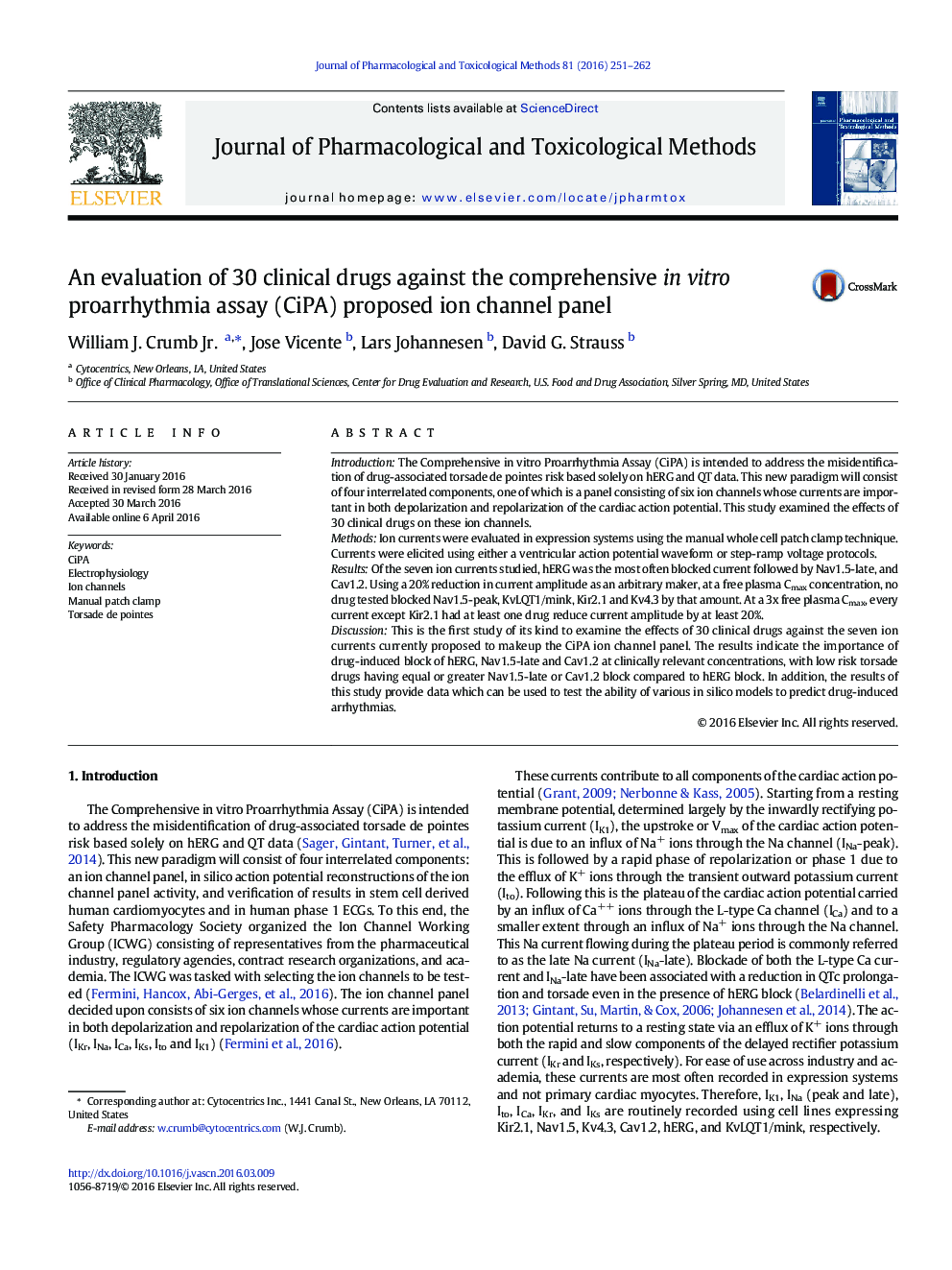| کد مقاله | کد نشریه | سال انتشار | مقاله انگلیسی | نسخه تمام متن |
|---|---|---|---|---|
| 5556618 | 1560482 | 2016 | 12 صفحه PDF | دانلود رایگان |

IntroductionThe Comprehensive in vitro Proarrhythmia Assay (CiPA) is intended to address the misidentification of drug-associated torsade de pointes risk based solely on hERG and QT data. This new paradigm will consist of four interrelated components, one of which is a panel consisting of six ion channels whose currents are important in both depolarization and repolarization of the cardiac action potential. This study examined the effects of 30 clinical drugs on these ion channels.MethodsIon currents were evaluated in expression systems using the manual whole cell patch clamp technique. Currents were elicited using either a ventricular action potential waveform or step-ramp voltage protocols.ResultsOf the seven ion currents studied, hERG was the most often blocked current followed by Nav1.5-late, and Cav1.2. Using a 20% reduction in current amplitude as an arbitrary maker, at a free plasma Cmax concentration, no drug tested blocked Nav1.5-peak, KvLQT1/mink, Kir2.1 and Kv4.3 by that amount. At a 3x free plasma Cmax, every current except Kir2.1 had at least one drug reduce current amplitude by at least 20%.DiscussionThis is the first study of its kind to examine the effects of 30 clinical drugs against the seven ion currents currently proposed to makeup the CiPA ion channel panel. The results indicate the importance of drug-induced block of hERG, Nav1.5-late and Cav1.2 at clinically relevant concentrations, with low risk torsade drugs having equal or greater Nav1.5-late or Cav1.2 block compared to hERG block. In addition, the results of this study provide data which can be used to test the ability of various in silico models to predict drug-induced arrhythmias.
Journal: Journal of Pharmacological and Toxicological Methods - Volume 81, September–October 2016, Pages 251–262